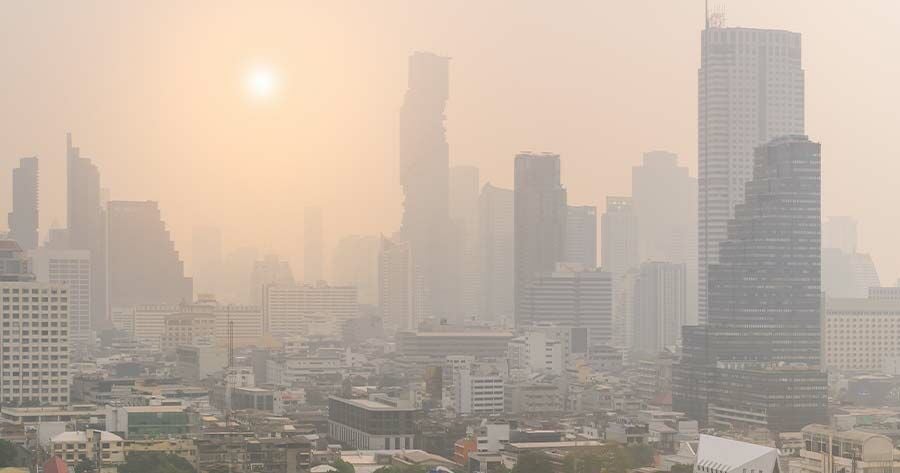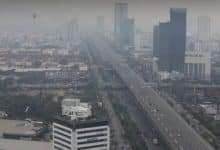Thailand battles unsafe PM2.5 dust levels in 67 provinces

Bangkok and 66 out of 76 provinces in Thailand grappled with hazardous levels of ultrafine dust particles today, with Sing Buri facing the most severe pollution.
The alarming situation was highlighted by the Geo-Informatics and Space Technology Development Agency (GISTDA) at 9am today, January 5, noting that particulate matter 2.5 micrometres and smaller (PM2.5) had reached harmful levels in five provinces.
Sing Buri led with a PM2.5 concentration of 85.6 micrograms per cubic metre of air over a 24-hour period. Close behind were Nakhon Phanom at 83.9µg/m³, Chai Nat at 81.5µg/m³, Nong Bua Lam Phu at 80µg/m³, and Nakhon Pathom at 79.6µg/m³. It’s important to note that the government considers a PM2.5 level above 37.5µg/m³ unsafe.
In contrast, provinces such as Chiang Rai, Phuket, and Chiang Mai reported moderate levels of PM2.5, staying within safe limits. Chiang Rai recorded 37.4µg/m³, while Phuket and Chiang Mai reported 34.8 and 34µg/m³ respectively.
Ranong, Rayong, Mae Hong Son, and Nakhon Si Thammarat also recorded PM2.5 levels below the safety threshold, providing some relief amidst widespread pollution concerns.
Air quality was rated as good in several southern provinces, with Chumphon measuring 24.5µg/m³, Surat Thani at 22.7µg/m³, Phang Nga at 21.5µg/m³, and Krabi showcasing the cleanest air at 19.9µg/m³.
The majority of provinces, however, experienced PM2.5 levels that began affecting health, falling within the orange range of 37.6 to 74.1µg/m³.
Bangkok’s air quality was among the most concerning, as unsafe levels of PM2.5 blanketed all 50 districts. Particularly alarming were the 34 districts that recorded red levels.
Bangkok Yai topped this list with a PM2.5 level of 102.3µg/m³, followed by Thon Buri at 100.9µg/m³ and Khlong San at 97.1µg/m³. Other districts such as Bang Kho Laem, Bangkok Noi, and Bang Rak reported levels above 90µg/m³, significantly surpassing the safety threshold, reported Bangkok Post.
“The PM2.5 levels in Bangkok have reached critical red levels, affecting all districts,” stated a representative from GISTDA.
The remaining districts in the capital were classified under the orange level, with PM2.5 concentrations ranging from 61.7 to 74.9µg/m³, indicating widespread air quality issues across the city.
Latest Thailand News
Follow The Thaiger on Google News:


























